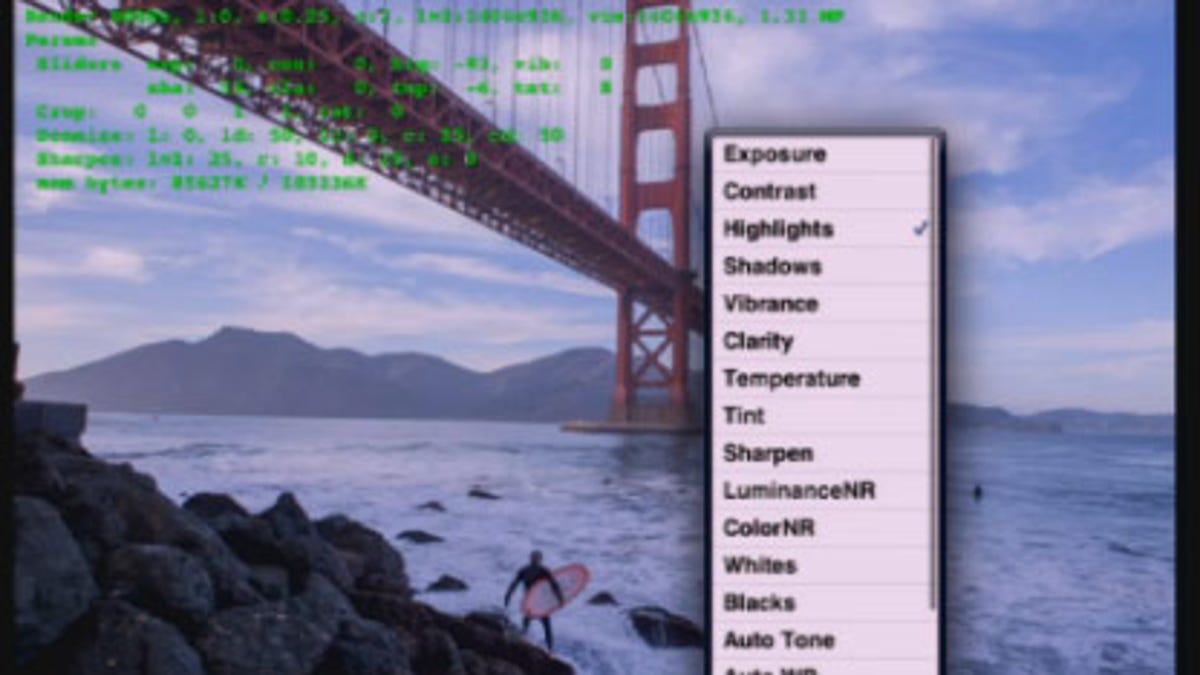Adobe to bring Lightroom-style photo editing to tablets
Bringing its technology for processing raw photos to mobile devices, then linking it with cloud services could be a step toward Lightroom on mobile.

Adobe Systems plans to release high-end photo-editing software for tablets. The new app would be a close relative to Adobe's Lightroom software for PCs and serve as a cloud-connected companion to the program.
Tom Hogarty, Adobe's group product manager for Lightroom, demonstrated an early prototype version of the app Wednesday on the Grid, an online show from Photoshop guru Scott Kelby.
Adobe has done a good job with PC-centric photography software, but the company needs to better incorporate Internet connectivity and mobile devices into photography workflow, Hogarty said.
"We need to take that story beyond the desktop. We haven't done a great job of it yet," Hogarty said. "The thing I'd like to sneak today is taking that raw processing and bringing it onto the mobile device."
He wouldn't promise when the app would ship or what exactly it would do, but he did demonstrate some features of the prototype software running on an iPad 2. He also offered several details about its features:
• The ability to edit photos taken in raw photo formats, including Lightroom develop-module parameters like exposure, clarity, shadows, highlights, and white balance.
• Cloud-synchronized editing so that changes made on a tablet arrive on the same photo on the PC.
• The ability to zoom all the way to 100 percent for checking photo focus and details.
And without promising anything, he said he'd like to see some of Lightroom's library-module features, like sorting photos into categories or flagging picks and rejects, in the app.
"I spend couple hours computing on the train," he said "I'd love to be able to sort and select images."
However, there was no glimpse of other Lightroom features such as brushes to darken just a part of an image or to erase a freckle.
Raw photos offer higher quality and more flexibility than JPEGs, but they're a processor-intensive hassle. Photo enthusiasts have swarmed to software such as Lightroom that can ease the task of editing and cataloging the photos.
The full list of editing controls on the prototype software were exposure, contrast, highlights, shadows, vibrance, clarity, temperature, tint, sharpen, luminance noise reduction, color noise reduction, whites, blacks, auto tone, and auto white balance. Buttons across the top of the app included options for flipping and cropping photos.
Hogarty only showed the list with some reluctance, though. "The engineers are going to kill me," he joked. "I'm going to get voted off the island."
Lightroom for tablets has been a much-requested program for years. Some alternatives exist, including Photosmith, which synchronizes with Lightroom but doesn't offer editing, and Apple's iPhoto, which doesn't synchronize with Lightroom.
Adobe has been aggressively pushing its Creative Cloud subscription service, which includes the full suite of Adobe software as well as online services such as Dropbox-like file sharing. But the service costs $50 per month, which is a lot for amateurs who might like photography but not need software for Web site design, magazine layout, and Flash programming.
Hogarty, though, said Adobe isn't necessarily thinking of leashing the mobile-cloud-PC synchronization service through just the Creative Cloud.
"What kind of cloud do photographers want? That's another important part of the discussion," he said. Hogarty also noted that Adobe is seeking input on the new software at a very early stage in its development.
Adobe will use technology called Smart Previews in the new Lightroom 5 beta that creates a version of a photo that's takes up fewer megabytes than the original. The full gamut of raw editing controls can still be used on Smart Preview images, though, and the editing instructions synchronized back with the original files
Photographers should be able to mix full-resolution and smaller versions of their shots. "We can work with a full-resolution workflow," Hogarty said.
Performance is one sticking point. He said that trying to use some of the editing sliders on the prototype software would make the tablet blow up, and that at times the screen refresh rate was choppy. Editing photos with many megapixels is a tough chore even for high-end PCs.
"We have significant performance expectations from the photography community. We take it very seriously," Hogarty said. But on mobile devices, "We understand there are limitations."

